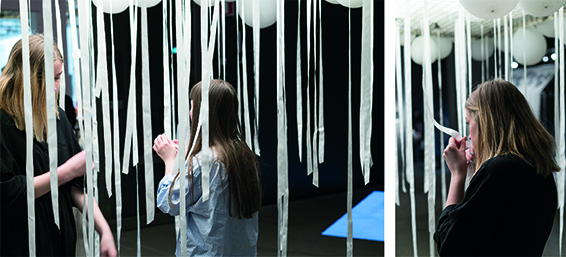Design with smells gives a holistic experience
2020-12-17

For a long time, Jyoti Kapur, a textile designer with many years of international experience, had wondered how experiences in different spaces affect us emotionally and determine whether we want to stay in the room or not. Although a space is experienced through an interaction among our five different senses, she discovered that smells in a textile context were a hitherto unexplored area. Driven by the challenge of addressing a lack of knowledge as well as satisfying her own curiosity, Jyoti Kapur decided to research how spaces can be designed by using smell as a material.
“In interior design, smells are often removed, as they are considered problematic. I investigate how to include smells in our spatial environments. That is important since smell is one of the sensory stimuli that we perceive in our daily living environment as it provides valuable information in a subliminal way,” said Jyoti Kapur. “In the absence of smells, we also lose connection to people, places, events and cherishable memories that otherwise provide us with a feeling of familiarity and comfort and thereby improve our well-being,” continued Jyoti Kapur.
Unique research
Focusing on smell as a material is something completely new in this field of research.
“There is a need to include non-visual design materials such as smell in higher design education and in design practice, as they are important for the overall design experience. So far, we have lacked a basic understanding of smell as a design material, its characteristics, and therefore its potential when it comes to design," said Jyoti Kapur.
It is an understanding that she wants to help increase through her doctoral thesis, On the Textility of Smell in Spatial Design. The aim of the thesis is to investigate smells as a design material in interior design from a holistic perspective. She does this using textiles and atmospheric qualities of air, humidity, and temperatures that can convey odors in indoor microclimate zones.
Jyoti Kapur describes designing the experiments as a challenge, as this is the first time she has designed with non-visual materials. “I lacked references to methods and tools for working with smells. The solution was tools and methods from the textile design discipline in which I have my background. I'm very glad it worked and brought a unique perspective to designing with smells.”

The results show that atmospheric factors can play an important role in the experience of smells, in that airflows bring smells and distribute them around the room. Furthermore, humidity keeps olfactory molecules in the air and, at higher temperatures, these molecules are extremely dynamic in their movements. In addition, textiles have been shown to have a good ability to absorb smells. One conclusion is that interior environments can be designed not only with colours, patterns, and textiles, but also olfactory expressions – which adds another significant dimension to the design experience.
Looking for collaborators
Her own research paves the way for further interdisciplinary research, including the developing of materials that can absorb and spread smells.
“I hope that these concepts could be developed as materials for interiors and spatial designing so that there is a design choice that can create diverse olfactory atmospheres in built spaces, and in that way contribute to a positive holistic experience,” said Jyoti Kapur.
Lena Carlsson, translation: Eva Medin
Jyoti Kapur

